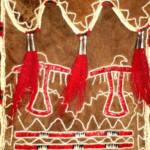For the newcomer to Southern Spain, one of the major difficulties is understanding the spoken Spanish. Even if you have good Castillan Spanish, you’ll hit a wall trying to understand the Spanish spoken in some of the Southern towns and villages. But it is possible to figure out what is being said if you have basic Spanish and understand the rules of the accent and dialect.
My own experience was one of bewilderment on moving to Southern Spain since, although I could be understood by almost everyone, I could understand almost nothing. Conversations were short, and rather one-sided. The following pointers will help the newcomer to make some sense of the pronunciation and some of the curious changes that take place. It’s not comprehensive and not everyone makes the changes in all their speech. You will meet people who speak Castillan Spanish, enunciate perfectly, and speak slow enough for you to understand. But they will be very much the exception. You are much more likely to come across the following.
Something called yeismo. This is where the “ll” which is normally pronounced “ly” becoming simply “y”. So instead of “lleno” (meaning full), it’s pronounced “yeno”.
The “s” is pronounced in some words as a Spanish “j”, so for example “mascar” (to chew) becomes “majcar” with the “j” pronounced like “ch” in the Scottish word “loch”.
Occasionally the “l” and “r” inside a word may be switched, or dropped altogether. “Golpe” (a blow) becomes “gorpe”, “carne” (meat) becomes “cajne”, and “soldado” (soldier) becomes “sordado”.
An “n” or an “r” can disappear altogether. Sometimes a “b” or a “g” can disappear. The name “Manolillo” becomes “Maoillo”, “mataron” (they killed) becomes “mataon”. “Cogollo” (a plant shoot) turns into “coollo”.
An “h” at the beginning of a word can be replaced by a “j” so “hambre” sounds “jambre”.
Pretty much every “s” at the end of the word disappeared, and so do most of the others… “Adios” (goodbye) becomes “adio”, “por supuesto” (of course) becomes “porupueto” or even “porueto”, “comemos” (we eat) becomes “comemo”.
The letter “d”, particularly in past participles tends to go walkies. “Comido” (eaten) becomes “comio”. This makes working out tenses quite tricky at times but eventually you become adept at reinserting the missing letter as you hear the verb.
Then there’s the seseo, which is using “s” for “c” and “z”, and then when you think you’ve got that, you encounter ceceo, using “z” for “s”.
Although at first, all this seems impossible, with a little practice your ear becomes flexible enough to tolerate the different pronunciations. We only find it difficult because we have trained our ears to listen strictly for the expected sounds, and by relaxing the rules a little, we end up hearing more.
The vocabulary of the region includes all the usual Spanish words but there are some seven thousand or so documented additional words which are local and often relate to regional crafts and industry. For example, in my village there is a word “calichero” which used to refer to the person who scraped off the old white paint before repainting. A “caliche” was a single flake of the white paint and derives from “cal”.
Some of the vocabulary and pronunciation is also found in parts of South America (seseo for example) but an excellent way to practice listening to Andaluz Spanish is to tune in to one of the radio stations from Cadiz or Jerez. The phone-ins are a rich and varied source of both accents and dialect words.
Ha’luego



